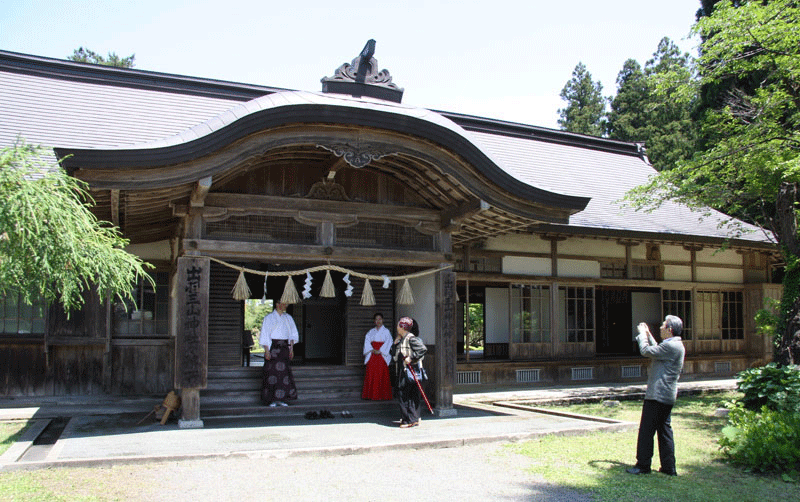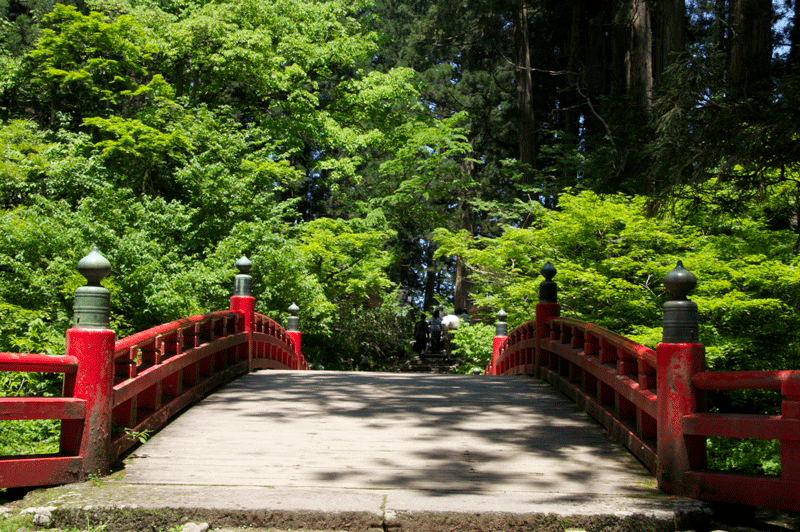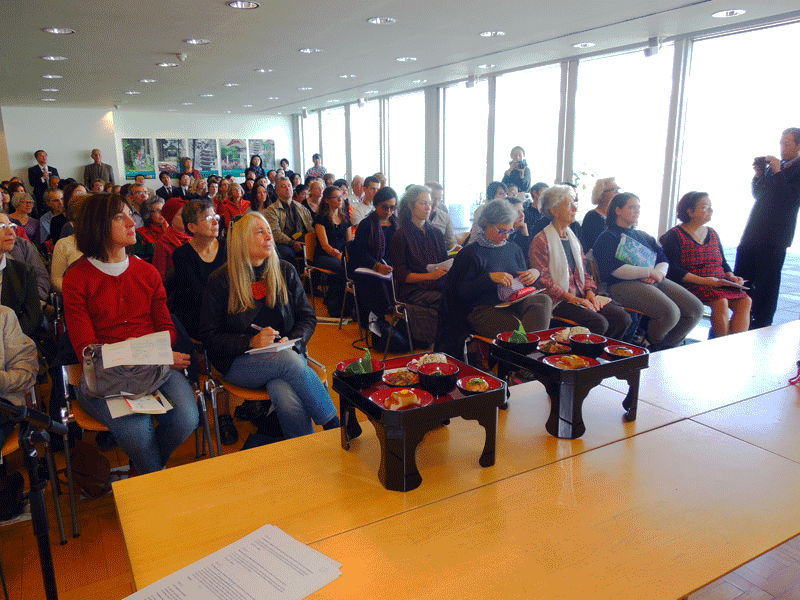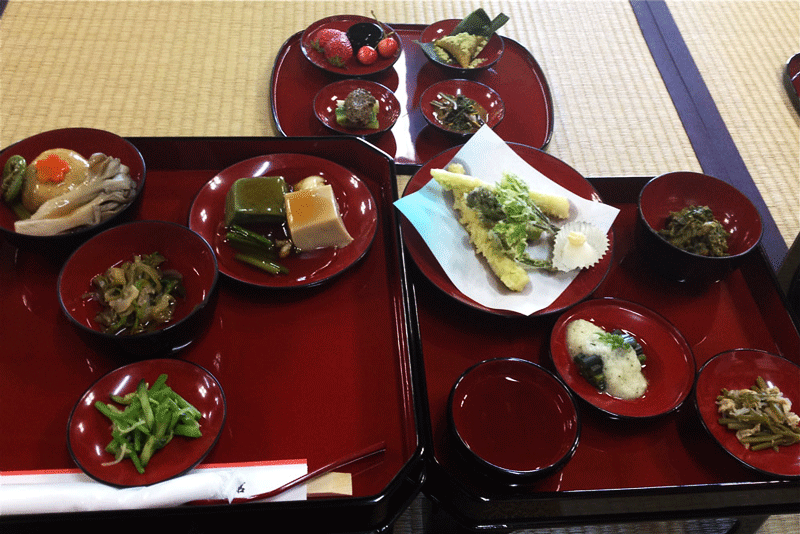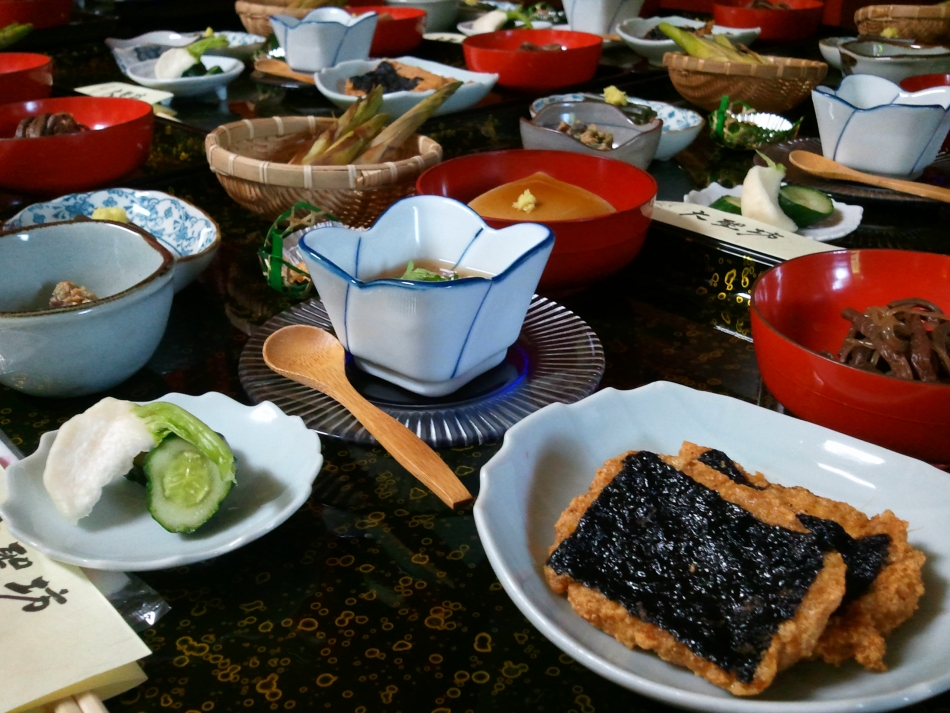Cradle [クレードル] 出羽庄内地域文化情報誌
The cultural informational magazine which visits the charm of Shonai.
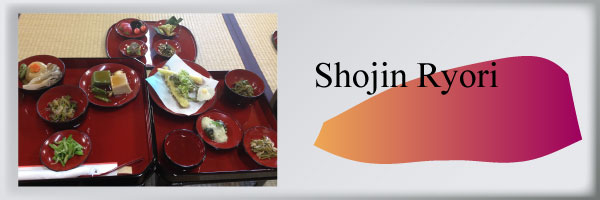
◆◆What is Shojin Ryori?◆◆
The word “shojin” in the Buddhist religion means to go to great lengths to do one’s best without the expectation of outcomes. In the Shinto religion, it means to abstain from external impurities and seclude oneself in a designated place.
◆◆Special Characteristics of Dewa Sanzan Shojin Ryori◆◆
Dewa Sanzan Shojin Ryori was created from a blend of Shojin Ryori developed at temples, the diet of the Shugendo yamabushi (mountain ascetic priests) who practiced sustainable living, and the culture of Kyoto brought by kitamaebune boats. It is also characterized by an abundance of mountain vegetables and mushrooms that grow in the Japanese beech tree forests of Mt. Gassan. The gathering, seasoning, preservation, and preparation of those mountain riches reflect the wisdom of the forefathers.
The act of eating in Haguro Shugendo not only signifies feeding the body and mind, but also the gift of life that is found in the deities and spirits residing in nature.
◆◆ Names Given to Dewa Sanzan Shojin Ryori ◆◆
Each culinary dish is named after a place related to the Dewa Sanzan religion (derived from the esoteric terminology of the Shugen worshippers). Those wishing to understand Dewa Sanzan should learn about the cuisine that represents the faith and sacred land, and try each dish. Consuming Dewa Sanzan Shojin Ryori means tasting the “source of life” given to us by the sacred mountains.
Honzen (full course):
Dewa no Hakusantou Gomadofu (crushed sesame seeds boiled in water and chilled like tofu); refers to the island on the Yura coast where the founder, Prince Hachiko arrived
Gassan no Kakegoya: Bamboo shoots from Mt. Gassan simmered with fried tofu
Haguro Shugen no Saito: Bracken flavored with ginger
Nishibudaraku: Udo (mountain vegetable) with sesame seed and miso dressing
Shishigo no Taki: Soup with nameko mushrooms and tofu
Ninozen (side dishes):
Hijiriyama no Shunju : Bamboo shoots from Mt. Gassan, shiitake mushroom tempura; Hijiriyama is where Prince Hachiko built a rush-thatched cottage and underwent harsh ascetic practices
Haraigawa no Kakehashi: oil-roasted butterbur
Omine no Fubuki: Broiled nameko mushrooms and tofu
Yura no Minato-age: Ground tofu, asakusa seaweed, ginger
Gassan no Yakeyama (takenori in a sake, soy sauce, and vinegar sauce)
◆◆ Ooizake◆◆
Shorei Festival is held each year on Mt. Haguro from New Year’s Eve until New Year’s Day. In this festival, two virtuous yamabushi priests called “matsunohijiri” undergo ascetic practices for a period of 100 days to pray for peace, national tranquility, bountiful harvests, and happiness for all. The last day of that training period is New Year’s Eve when the Shorei Festival is held. Being chosen as a matsunohijiri is the greatest honor for a Haguro yamabushi priest. The 100 days of ascetic training and the Shorei Festival are referred to as Fuyu-no-Mine. A ritual called Ooizake was held during Fuyu-no-Mine until about 1921. It is said that in this ritual, the matsunohijiri invited leaders from Mt. Haguro who carried out the festival and served them with such a wonderful presentation of Shojin Ryori that it was called the greatest feast in Japan. There were 123 different ingredients used in the cuisine for 25 dishes. Apparently, procurement of the ingredients began several years in advance, and cost so much that some families went broke. Today, that Shojin Ryori is only a dream.
◆◆Introducing Shojin Ryori Overseas◆◆
Through a Japan Foundation project conducted in 2012, Dewa Sanzan Shojin Ryori was presented in Paris, France and Budapest, Hungary. Participants were interested not only in the Shojin Ryori, but also in the over 1,400 year-old tradition and culture of Dewa Sanzan that forms the backdrop to the cuisine. The popularity of Japanese cuisine contributed to rave reviews.
◆◆New Shojin Ryori◆◆
In June 2012, new kinds of Shojin Ryori called Mikkazuki-zen and Suzukaze -zen were presented that have seasoning different from traditional seasoning. The names are taken from Matsuo Basho’s poem, “Coolness! Under a dim crescent. Mt. Haguro.”
Tonburi with miso, Japanese knotweed and koshiabura (mountain vegetable) flavored with sweet vinegar, udo and fuki-no-to(mountain vegetable) with miso dressing, bracken and yams, red ostrich fern with spicy soy sauce, 2 types of seasonal mountain vegetables with gomadofu (crushed sesame seeds boiled in water and chilled like tofu) and sauce (nettle, lily bulb)
Deep-fried tofu simmered with edamame, roasted and simmered akamizu (mountain vegetable)
Urui (mountain vegetable) tonpura (bamboo shoots from Mt. Gassan, Fatsia sprouts, ostrich fern, koshiabura)
Master Chef Ito (Saikan):
“Dewa Sanzan Shojin Ryori originally developed from the sustainable way of life practiced by the yamabushi priests. The foods taken from the mountains are eaten near the mountains. I’d like our guests to receive the energy of the mountains.”
Mikkazuki-zen and Suzukaze-zen can be enjoyed at Saikan by reservation.
◆◆The Shojin Ryori Project◆◆
There are 30 shukubo (pilgrim’s lodgings) in the Toge District of Haguro. The owners, the proprietresses, and the proprietresses-to-be started the Dewa Sanzan Shojin Ryori Project in June 2012. Opportunities were created for the women to gather, changing the old-fashioned custom of “staying out of other people’s kitchens.” They hold study sessions to learn about each other’s dishes, share knowledge, and hold events within and without the prefecture to share Dewa Sanzan Shojin Ryori with many others.
A forgotten dish called “minato-age” was revived by proprietresses with many years of experience.
◆References◆
“Shojin Ryori from Dewa Sanzan” pamphlet, Haguro Tourist Association
“Nihon no Shokuseikatsu Zenshu Kikikaki Yamagata no Shokuji (Complete Works of Dietary Life in Japan—Written Records of Oral Accounts: Meals in Yamagata),” Rural Culture Association
“Shoku no Bungakukan Daisango Tokushu Shonairo Bungaku to Mikaku no Tabi (Literature on Diet No.3: Focusing on Shonai Roads—a journey of literature and flavors),” Kinokuniya Co., Ltd
Cradle[クレードル]出羽庄内地域文化情報誌
"Cradle secretariat" telephone: 0800-800-0806 or E-Mail
